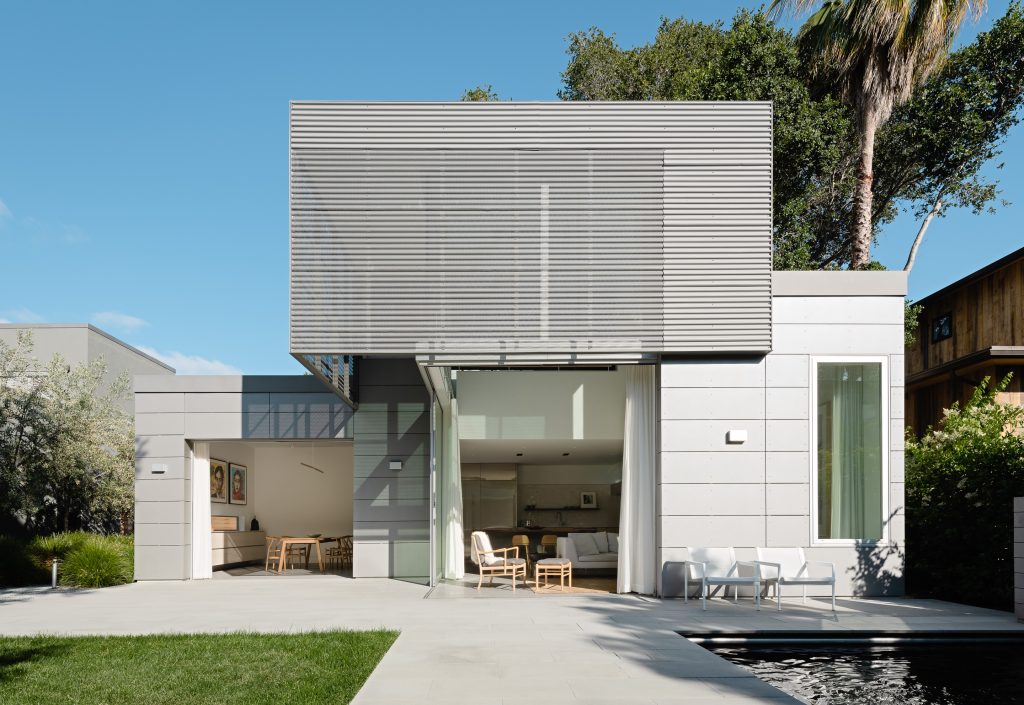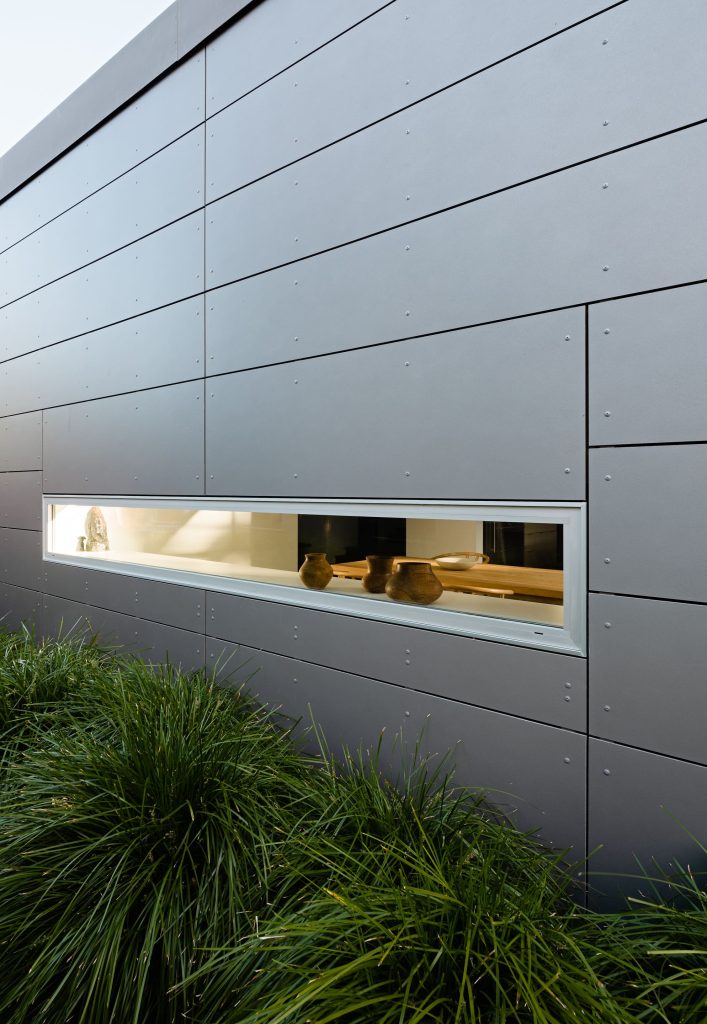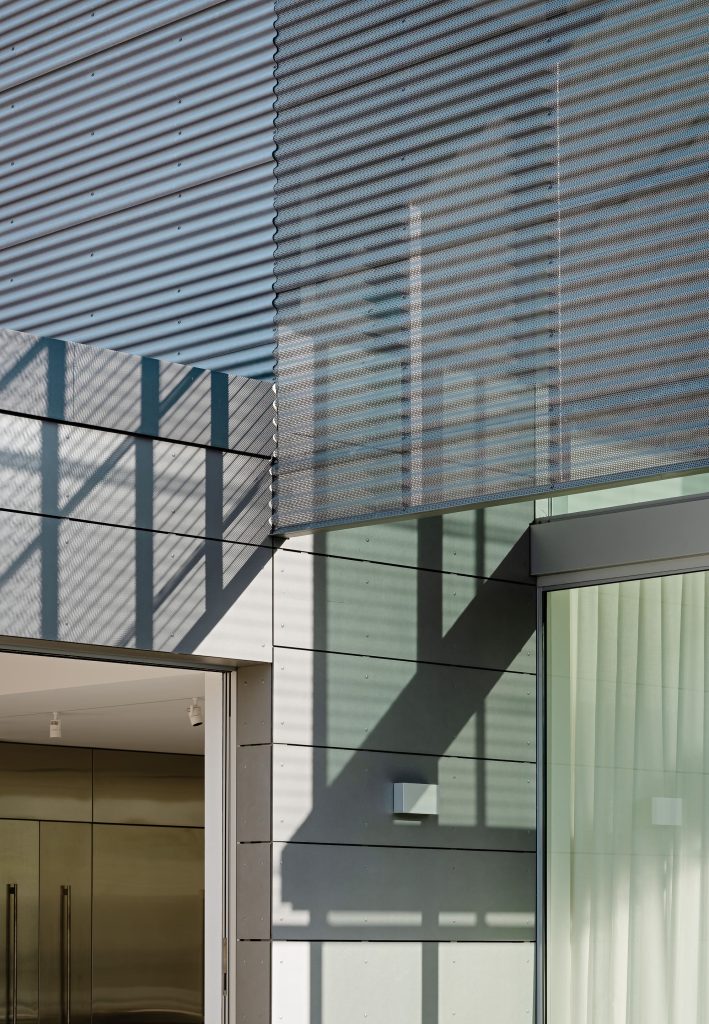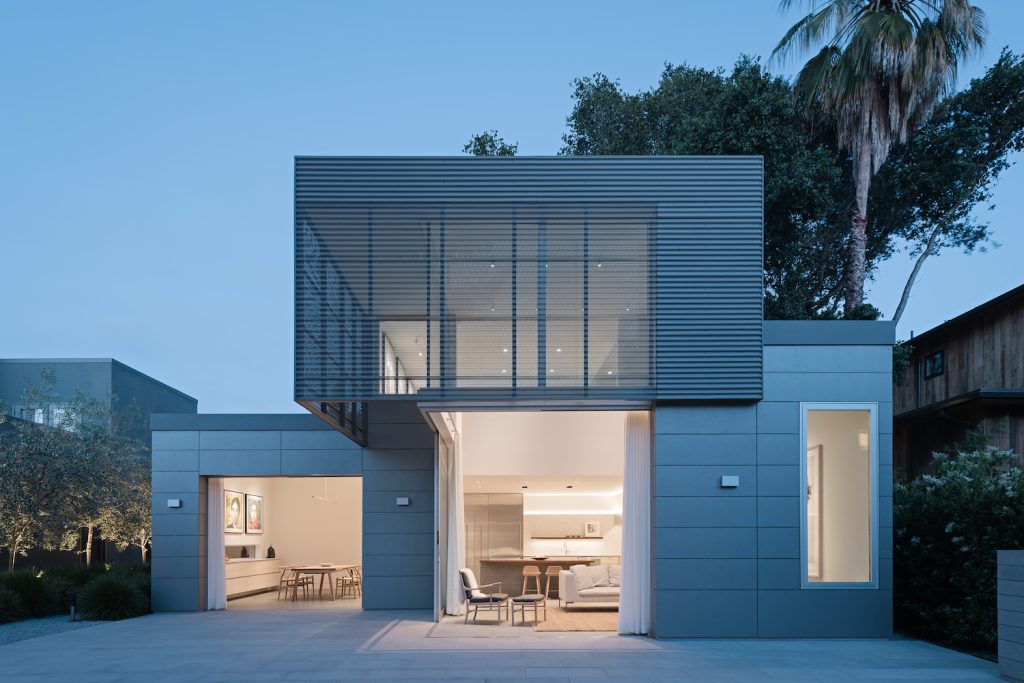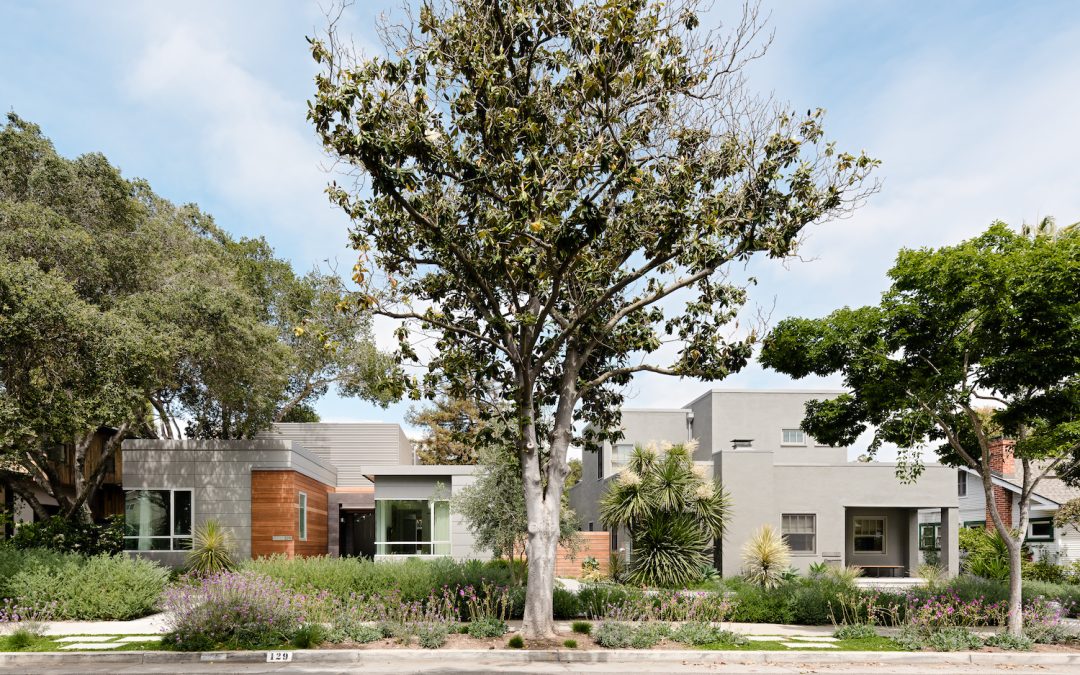When the lot adjacent to their house came on the market a few years ago, the owners saw an opportunity to expand beyond their small house in Palo Alto (leader in cutting-edge technological development) where they had lived for 20 years, raising their four children.
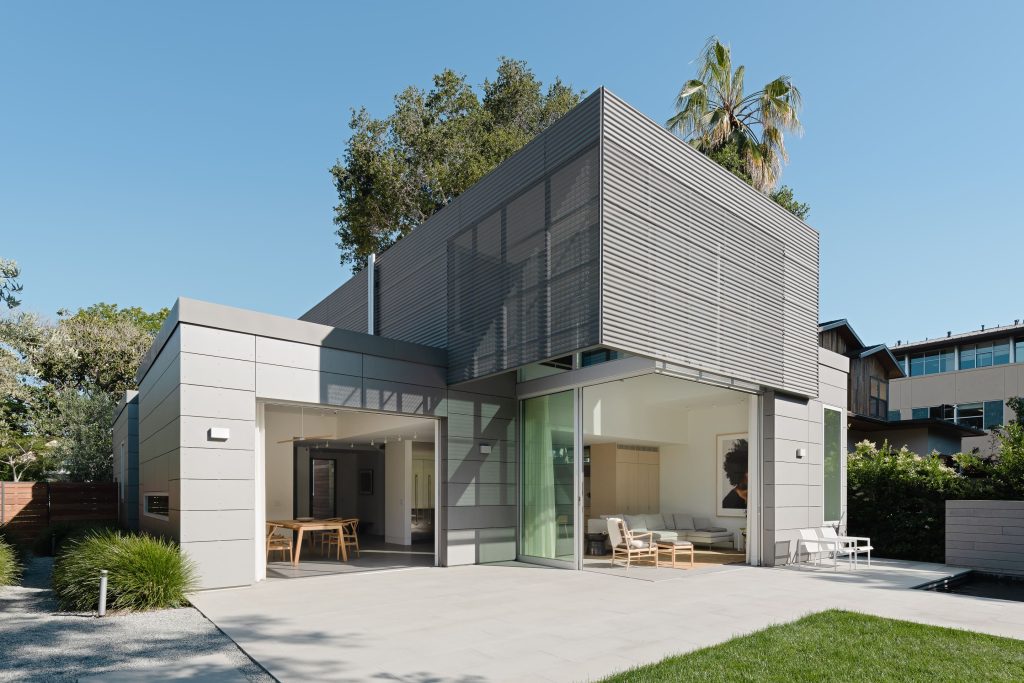
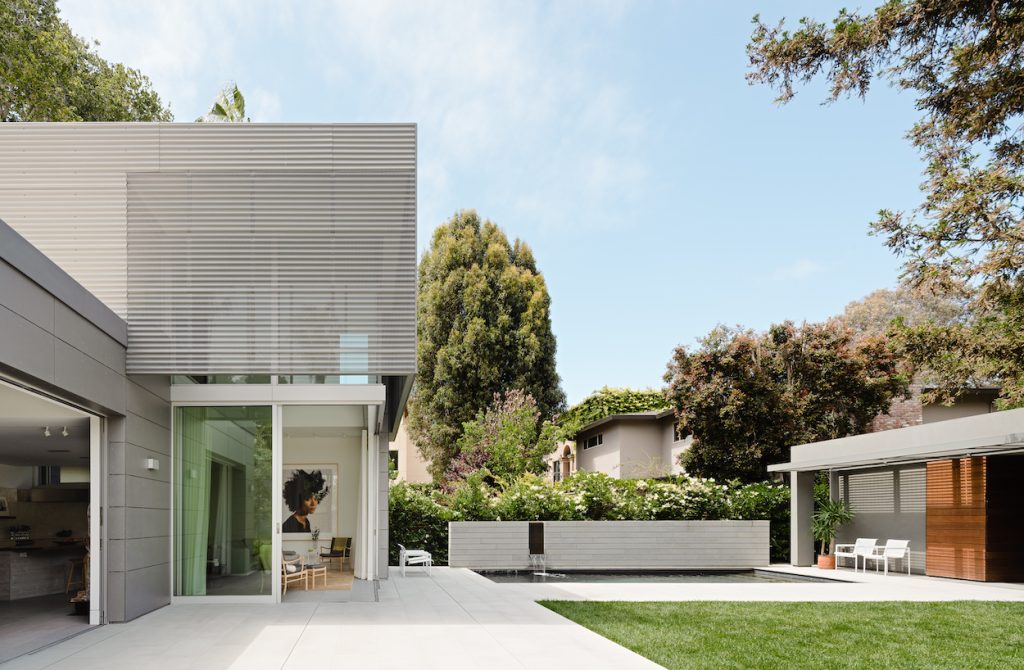
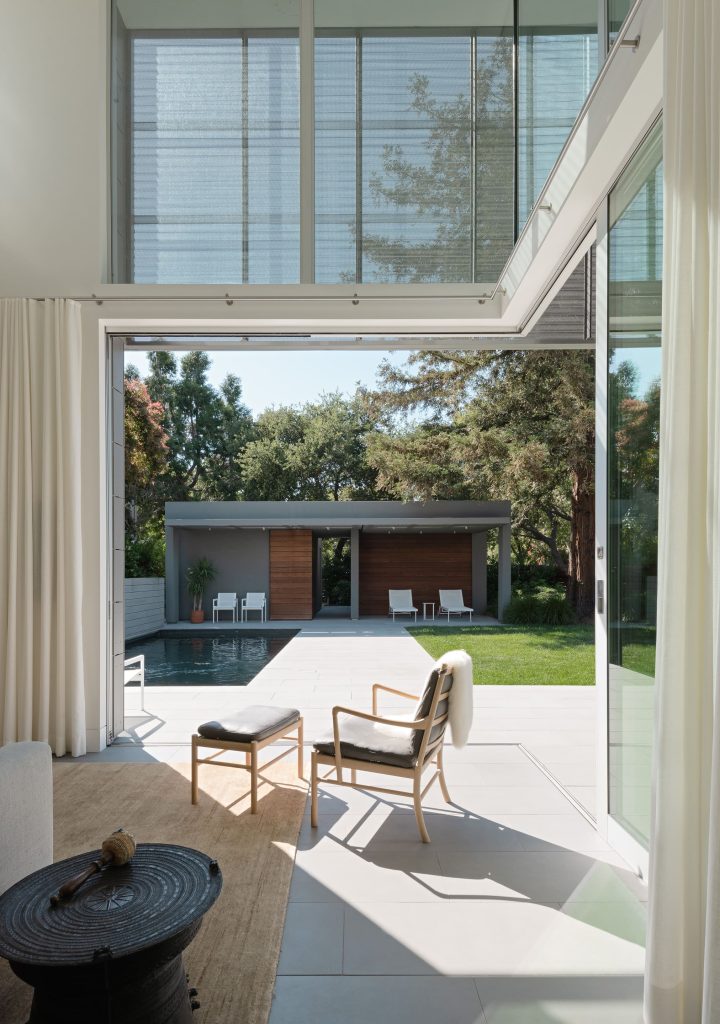
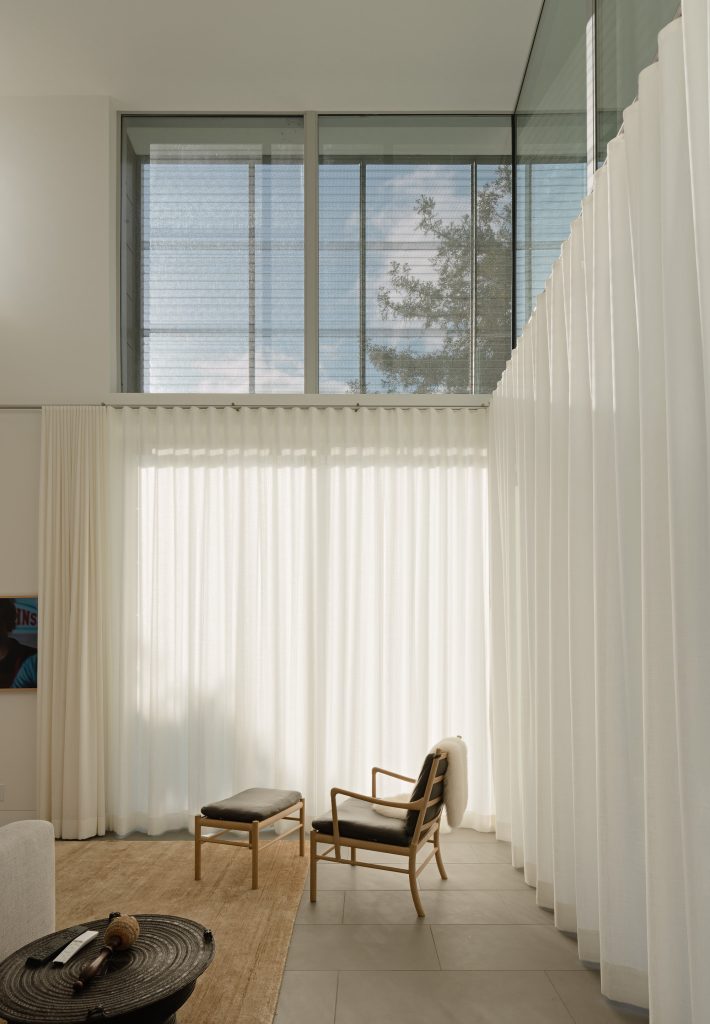
As the global centre of technology and innovation, Palo Alto is the corporate headquarters for many world-class companies and research facilities such as Hewlett-Packard and Tesla. Home to Stanford University, Palo Alto also features beautiful and historic residential neighbourhoods, vibrant shopping and retail districts. Its highly educated and culturally sophisticated citizenry is actively engaged in making a difference both locally and globally.
The city is more than 100 years old, and is named after a majestic 1000-year-old coastal redwood tree along San Francisquito Creek, where early Spanish explorers settled. The blend of business areas and beautiful residential neighborhoods anchored by a vibrant downtown defines its unique character.
Tree-lined streets and historic buildings reflect the California heritage. To add to this exciting mix of tradition and innovation, Palo Alto is also home to Stanford University which incorporates Cantor Arts Center, Frost Amphitheatre, Bing Concert Hall, and several other venues offering live performances, speaker series, performing arts and more.
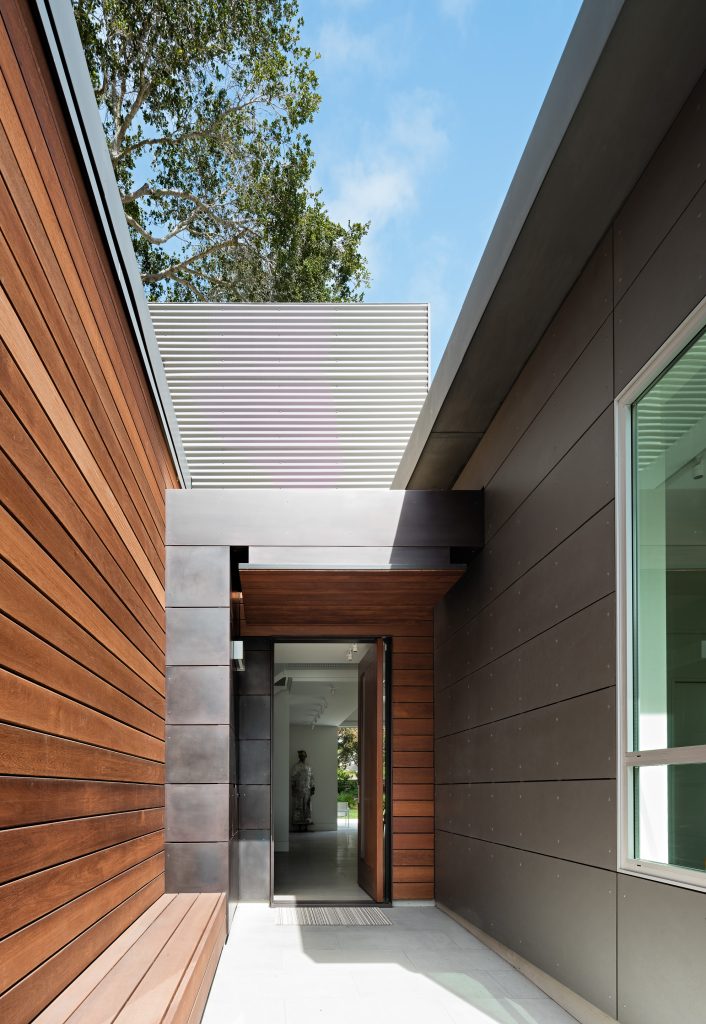
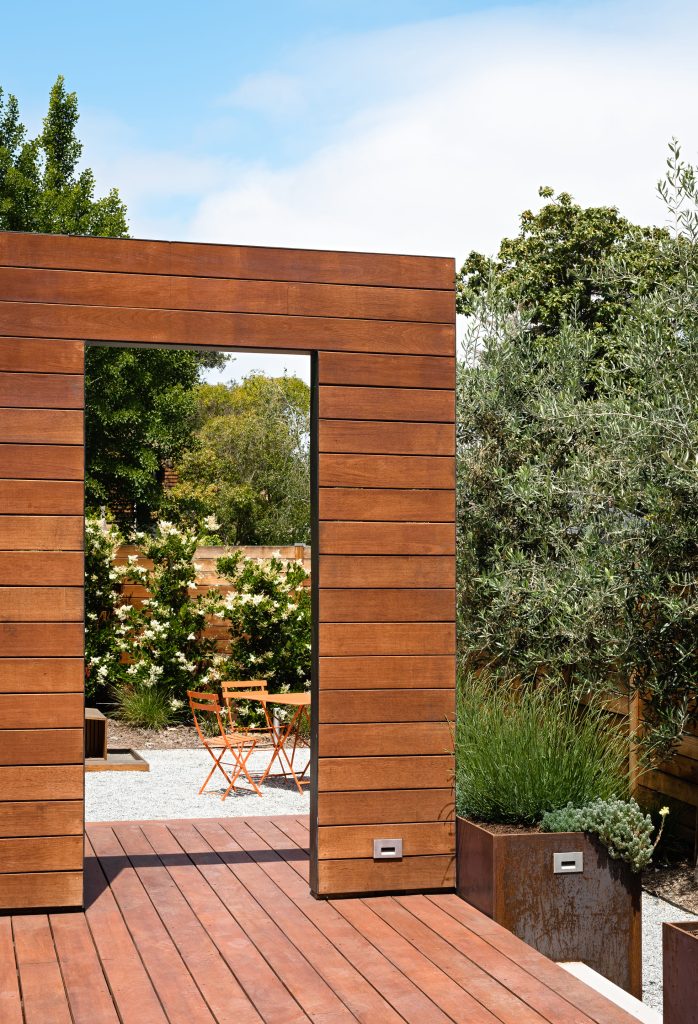
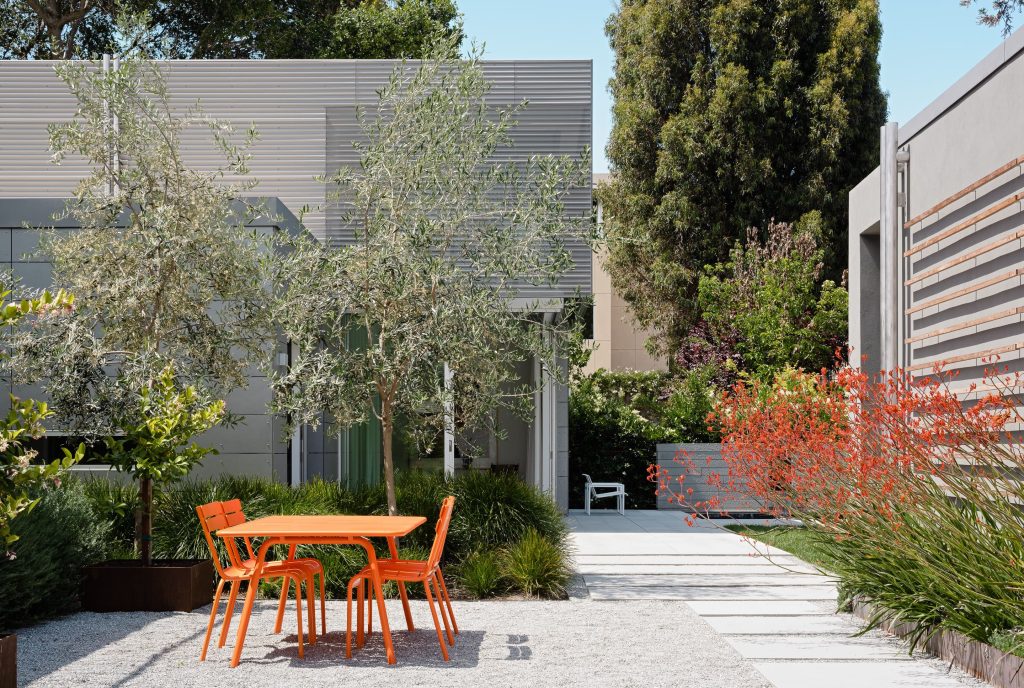
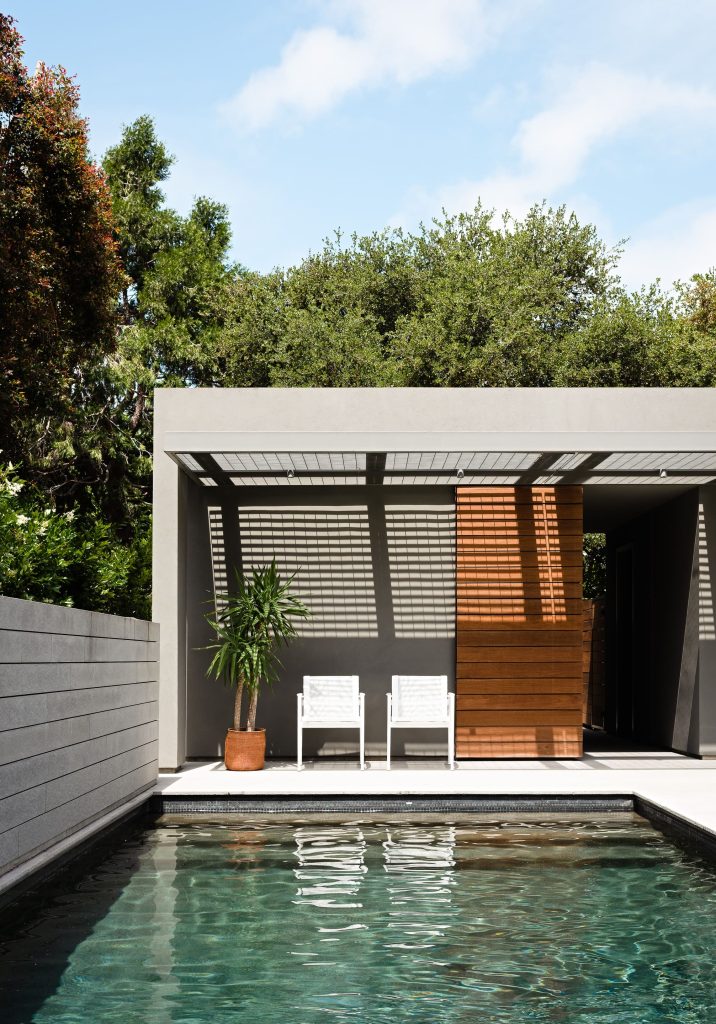
From the street, the volumetric arrangement of this new house builds on the blocky vernacular of the existing residence – a generic assemblage of unadorned builder boxes, with a few random arches, now removed.
So that the two buildings feel connected, though not physically touching, the new house begins with the same massing language. However, the two bedrooms are now on the front (street side), split by the entry, forming separate volumes with differing floor levels and living spaces at the rear. A third box at the second level, set back on the sides and front, completes the composition.
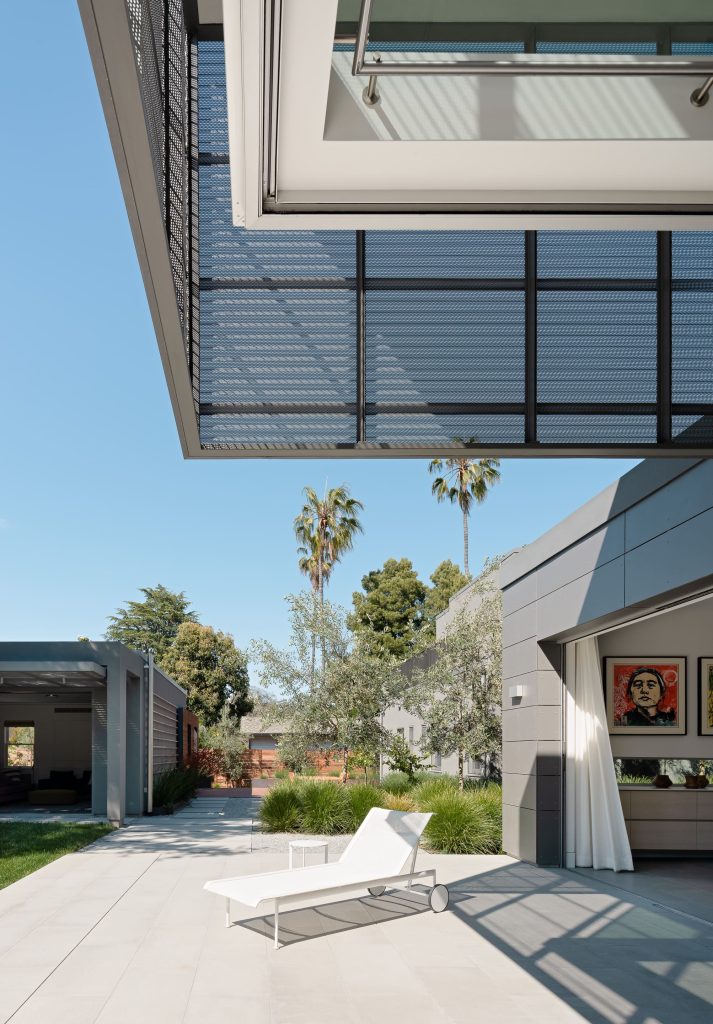
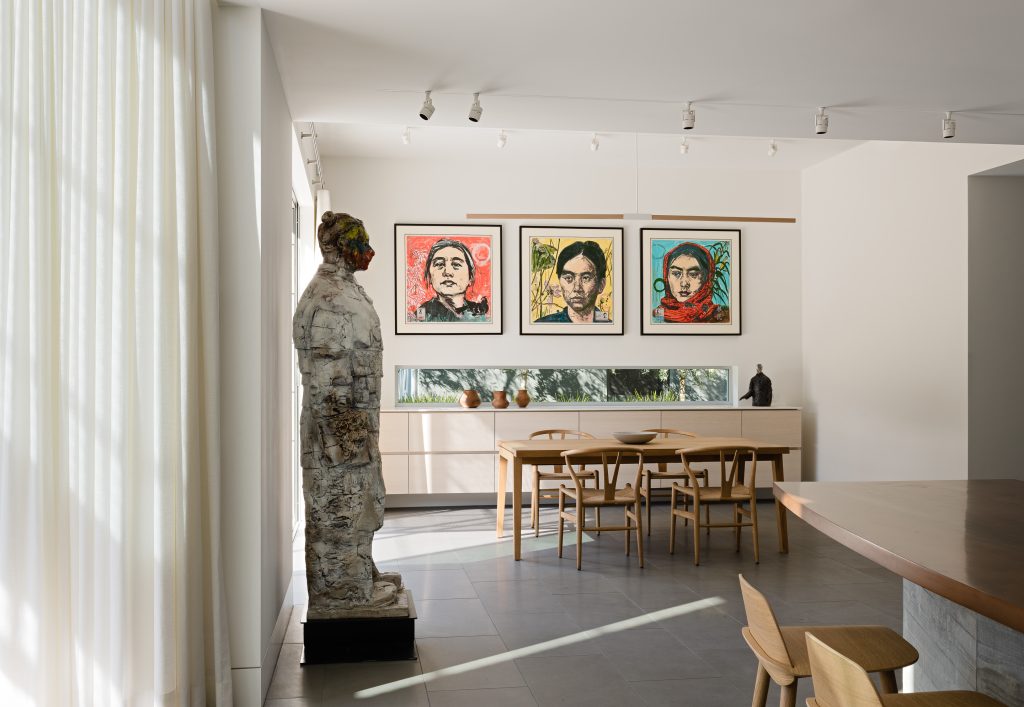
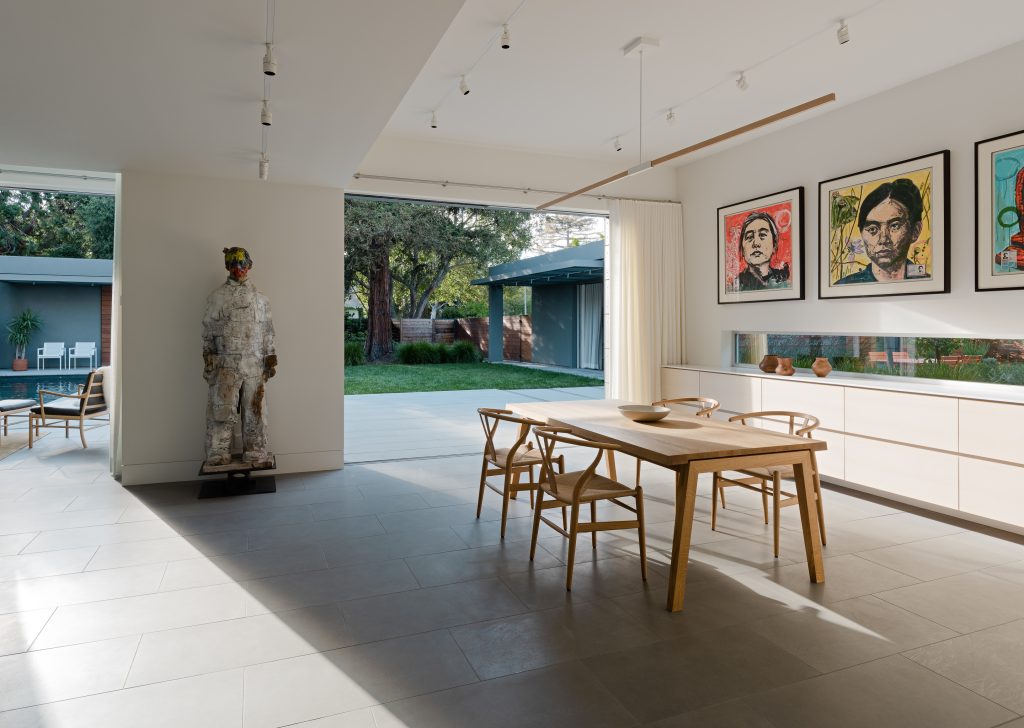
The construction created additional interior space which formed a private courtyard for an existing house that remains in place. The largest new structure, the Art House, is designed to house a burgeoning art collection, and to accommodate occasional guests.
Green-grey limestone flooring throughout the main floor connects the interior spaces with the exterior patio, creating a feeling of continuity. The white ‘gallery’ quality of the interior spaces, selected as the background most versatile for art, is offset with a muted palette of soft green coloured stone, stained white oak and warm neutral furnishings.
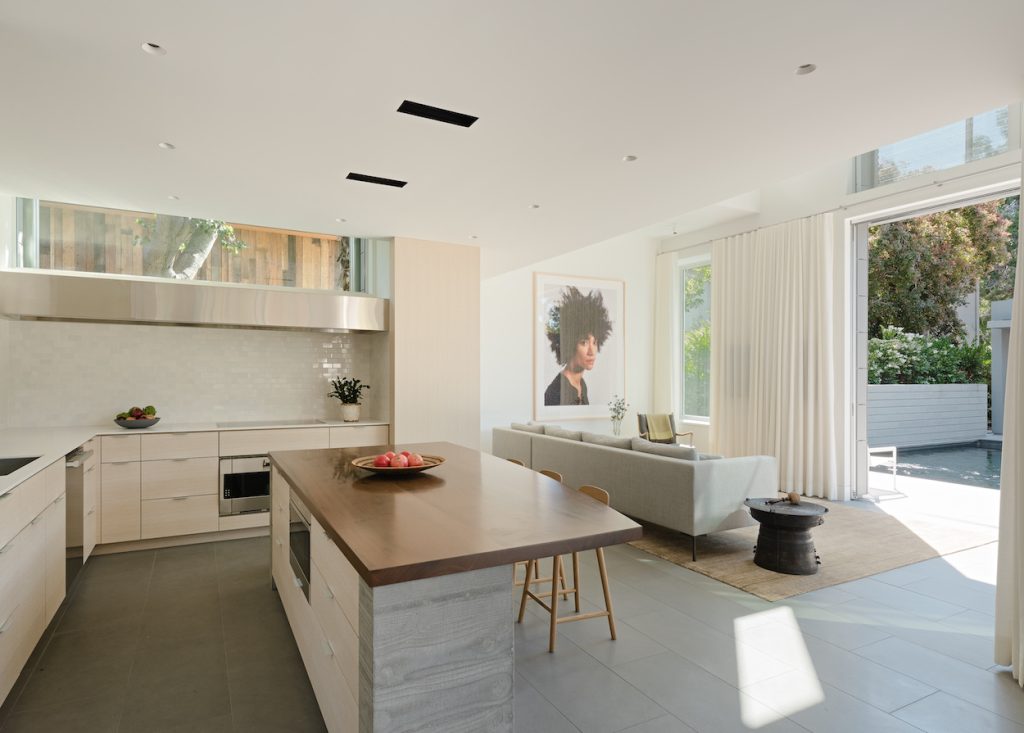
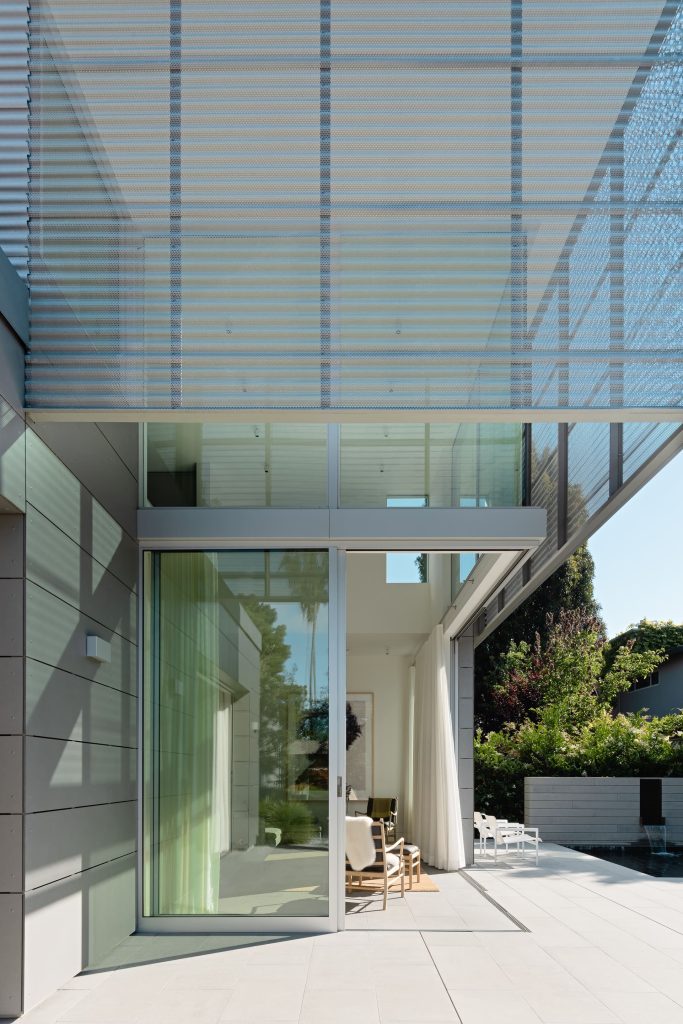
Details throughout are restrained and minimal, receding in service of the art.
The planning challenge was how to resolve the geometry of the trapezoidal site, while complying with the scale of the neighborhood, and providing enough open space to satisfy the requirements of the program. Locating the art storage and studio structures against the rear setback, while keeping them low and discreet relative to the forward position of the new taller- and also the original- houses, creates a false perspective, increasing the perceived depth of the property.
In the Art House’s living room, 3-metre tall glass doors disappear into pockets and are set flush, blurring the distinction between inside and outside while adding a grand scale. A small pool and lawn provide a focal point to the open space creating a ‘village green’ where the family gathers on weekends.
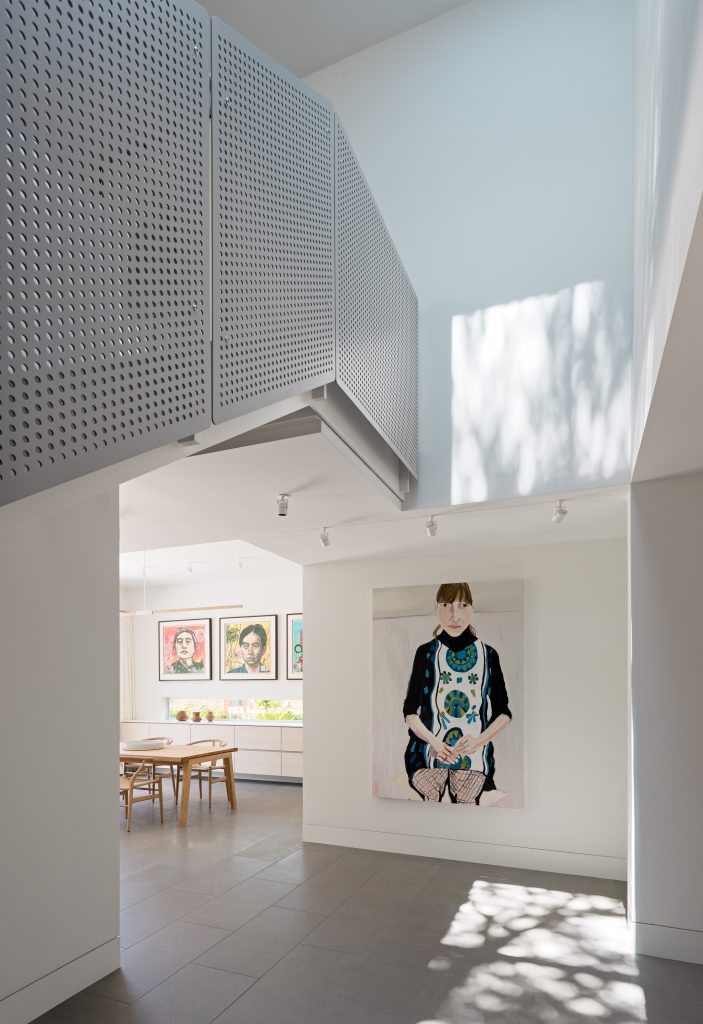
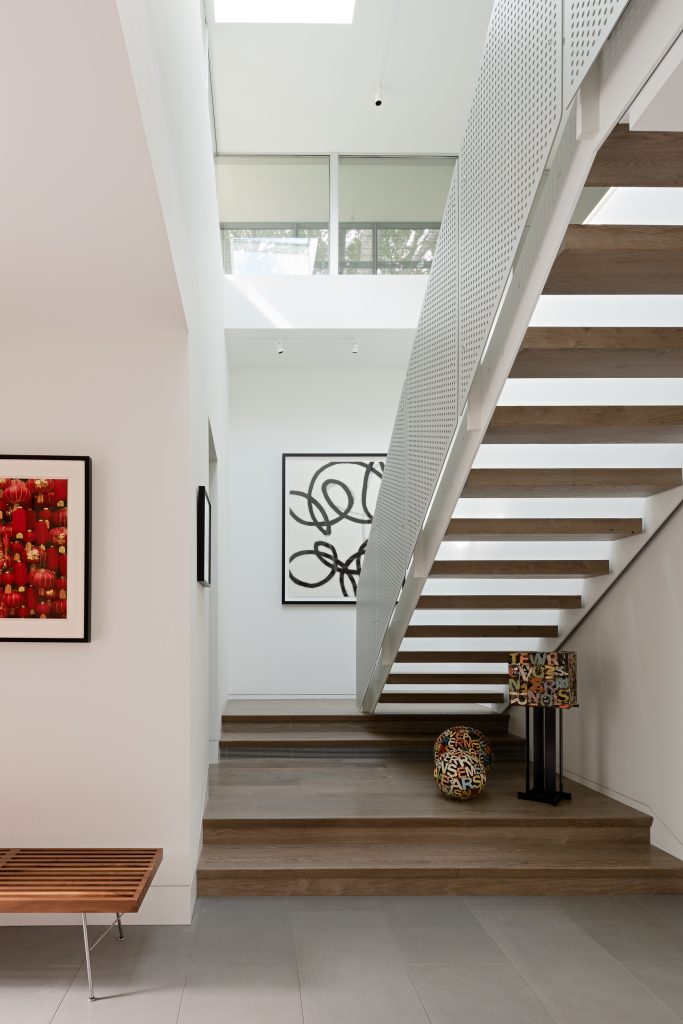
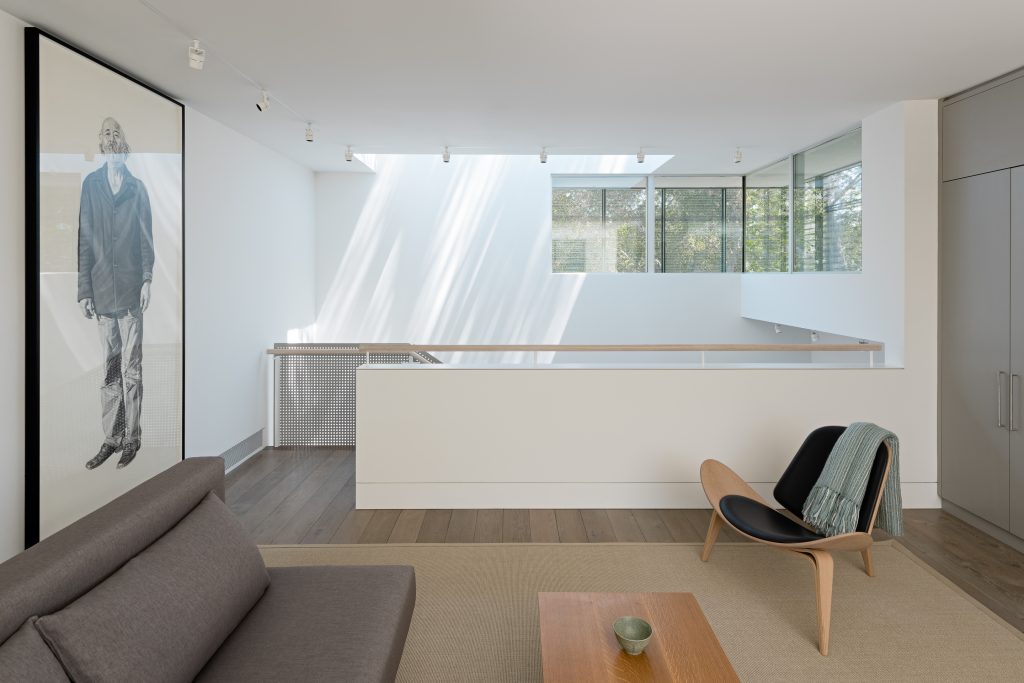
Art is present in every room and on every wall, while daylight is filtered through perforated zinc that wraps the second level, reducing heat gain.
In addition to providing ample wall space and interior daylighting, consideration was given to how the building feels at night: curtains are used to protect from the heat sink of the night-time sky and artificial lighting is ample, flexible and balanced. Curtains dampen acoustic reverberation in interior spaces, making the overall ambiance quieter.
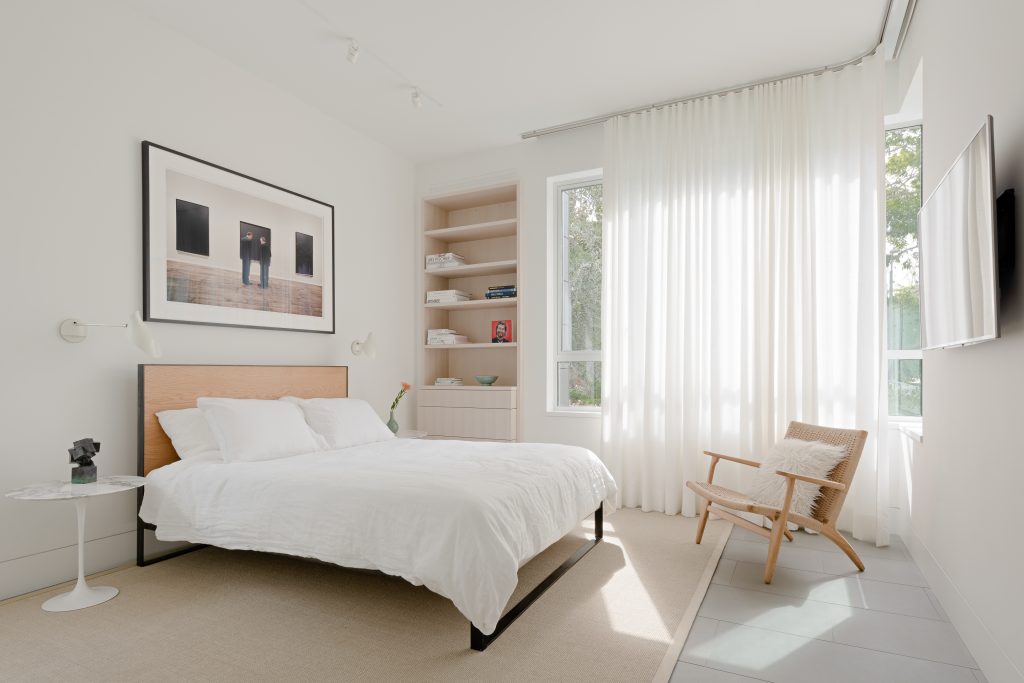
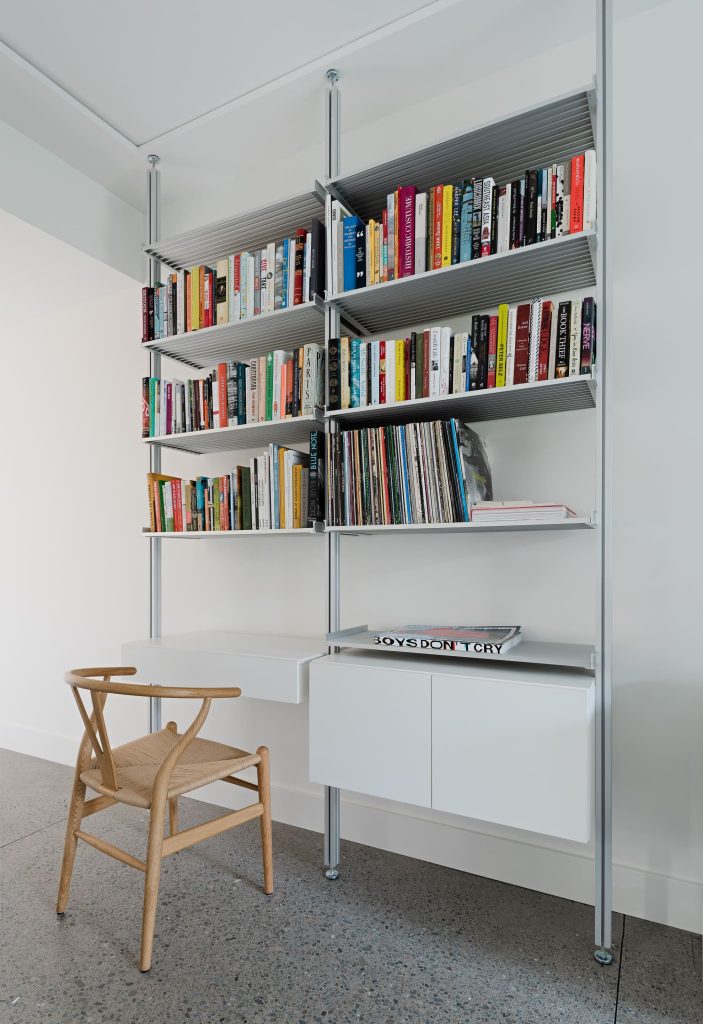
Besides the upper-level corrugated zinc scrim, sometimes perforated sometimes not, the balance of the building envelope is clad in low maintenance cementitious panels detached from the exterior plywood sheathing by an air barrier. This ‘rain screen’ construction provides both thermal and waterproofing benefits.
Art House + Courtyard location: Palo Alto, California, USA | Project Team: Buttrick Projects A+D (Architecture); Buttrick Projects A+D (Interiors); Structus Inc. (Structural Engineering); Stroudwater Design (Landscape); Pritchard Peck Lighting (Lighting Design)
Photography: Joe Fletcher
Sustainable Measures: Cool screen envelope | Rainscreen wall with low maintenance exterior cladding | Cool roof | Heat recovery ventilation |Dense pack cellulose insulation | LED lighting
